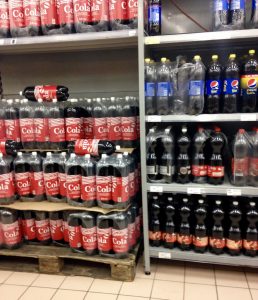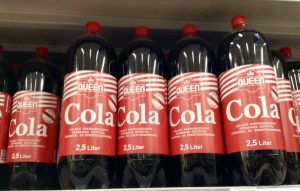High Fructose Corn Syrup and Diabetes
Type II diabetes is a rising global epidemic that has been linked to extremely high healthcare costs.
A study by researchers from University of Oxford and USC revealed that the condition has been boosted by large amounts of HFCS (high fructose corn syrup) found in food supplies around the world.
The study, which was published in Global Public Health, suggested that countries with HFCS content in their food supply were 20 percent more likely to have a diabetes epidemic than those without it.
Furthermore, the study indicated that the significantly increased prevalence of diabetes associated with the HFCS did not depend on whether the patient had obesity or high sugar intake.
HFCS – A Serious Health Risk
According to Michael Goran – who is the principal study author and director of the Childhood Obesity Research, professor of preventive medicine, and co-director of the Diabetes & Obesity Research Institute at USC’s Keck School of Medicine – HFCS seems to pose a serious public health threat on a global scale.
The study is one of the many scientific literatures that linked HFCS consumption with negative health implications separate from and more harmful than natural sugar.
There were 42 countries involved in the study, and the United States was found to contain the highest per-capita consumption of high fructose corn syrup at 55 pounds (or 25 kilograms) per year.
 Hungary followed at a close second, with an annual rate of 47 pounds (16 kilograms) per capita. Some of the other countries found guilty of high HFCS consumption include Slovakia, Mexico, Korea, Japan, Canada, Bulgaria, Belgium, and Argentina.
Hungary followed at a close second, with an annual rate of 47 pounds (16 kilograms) per capita. Some of the other countries found guilty of high HFCS consumption include Slovakia, Mexico, Korea, Japan, Canada, Bulgaria, Belgium, and Argentina.
Countries that were on the lower end of HFCS consumption include Serbia, Portugal, Poland, Greece, Germany, Finland, and Egypt. Some countries such as Uruguay, the UK, Sweden, Italy, Ireland, India, France, Denmark, China, and Australia had a rate of less than 0.5kg per year.
Generally, countries with a relatively high number of HFCS consumers were found to have an average prevalence of type II diabetes of 8%, while those with fewer users had 6.7 percent.
Stanley Ulijaszek – the study co-author and director of the Institute of Social & Cultural Anthropology at the University of Oxford – concluded that increased use of HFCS and the rise of Type II diabetes were directly related.
This relationship is probably aided by higher fructose levels in foods and beverages prepared with HFCS. While both glucose and fructose occur in ordinary sugar in equal amounts, HFCS boasts a higher concentration of fructose.
This subsequently makes HFCS sweeter and provides greater stability and better appearance to processed foods, particularly because foods made with a lot of fructose tend to have more consistent browning when baked.
High Fructose in Soft Drinks
In another related study, the fructose content in certain U.S.-based soft drinks, mainly the most popular ones, was found to be approximately 20% higher than expected.
This basically means that some manufacturers might be adding more fructose than was previously thought. The researchers stated that these differences might be contributing to high fructose consumption in countries that use HFCS.
However, since the industry does not disclose HFCS content on food levels, the study noted that it is difficult to determine the actual fructose content in foods and beverages.
Fructose Metabolized Differently
Substantial research has shown that fructose is metabolized differently from glucose in the body.
For starters, insulin is not involved in fructose metabolism, which takes place mostly in the liver so that it can be converted into fat. This process has been linked to nonalcoholic fatty liver disease, one of the rising conditions among Hispanics in Mexico and the United States.
 According to Ulijaszek, sweet foods are in high demand amongst most populations, but unfortunately some people are consuming significantly more fructose from HFCS than the human metabolism is capable of processing.
According to Ulijaszek, sweet foods are in high demand amongst most populations, but unfortunately some people are consuming significantly more fructose from HFCS than the human metabolism is capable of processing.
This syrup is available in many processed foods and drinks, but the exact content varies tremendously from country to country.
The U.S. is the largest consumer of HFCS. In fact, HFCS was the predominant sweetener in soft drinks in the country by the late ‘90s, and it accounted for about 40% of all caloric sweeteners.
However, since trade restrictions were lifted in 2008, HFCS exports from the U.S. to Mexico rose “exponentially”.
The researchers have recommended public health strategies that call for better labeling of HFCS and fructose content in processed foods.
To highlight the different levels of HFCS consumption in the European Union, the researchers stated that quotas for high fructose corn syrup production were set by trade & agricultural policies.
Some countries like the U.K. and Sweden do not claim their assigned quotas, but other countries like Slovakia and Hungary can purchase additional quotas from the disinterested countries.
As such, the findings of the study have serious implications on international trade policies that may have an impact on public health.
Tim Lobstein – the director of the International Association for the Study of Obesity – said that if HFCS consumption is a risk factor for diabetes, which is one of the most chronic diseases in the world, then it is important to reevaluate agricultural trade policies and change national dietary guidelines.
He also added that HFCS would be one of the ingredients to avoid, like salt and trans fats, and foods should come with warning labels.
